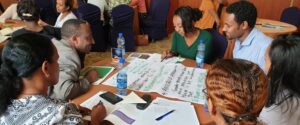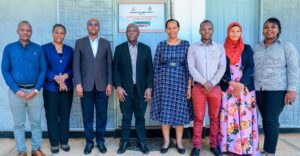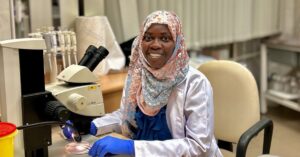From open access to openness
This post was written by Jörgen Eriksson. Jörgen is the manager of the Department of Scientific Communication at Lund University Library.
I attended the Berlin10 conference in Stellenbosch, South Africa, 6-8 November, 2012 thanks to funding from INASP. It turned out to be a very successful and well organized event and here I provide a summary of some highlights and key arguments.
Pre-workshop on “Open access policy development and advocacy”
 To summarise the four case studies presented at the pre-workshop on “Open access policy development and advocacy” could be done in a few words: Team effort! Slow progress!
To summarise the four case studies presented at the pre-workshop on “Open access policy development and advocacy” could be done in a few words: Team effort! Slow progress!
Without strong incentives in the form of carrots and/or sticks it is a long haul to motivate busy researchers to spend time on self-archiving in institutional repositories. Queensland University of Technology is a clear outlier with 87% free full text in 2012. They have had a mandate for 10 years, pay a lot of attention to increased usage as download statistics and correlate Open Access publishing with increased citation rates to motivate researchers.
Active support from the university and library management is also crucial, as is creating new partnerships within the university — for example, with communication and information offices, research services, etc. It is also important to communicate the idea to researchers and faculty as broadly and early as possible.
Berlin10: From Open Access to openness
The Open Access movement started in the early 1990s as imaginative researchers saw new possibilities in scientific communication among researchers using the internet. Names like Stevan Harnard (advocating “scientific skywriting”) and Paul Ginsparg (setting up the arXiv pre-print server) come to mind. Soon the university libraries caught on. Hit hard by rapidly rising journal prices and a growing number of publications, Open Access seemed, to many libraries, to be a way to mend a system that was at breaking point. What we have seen for a while is that research funders, governments and international organizations endorse open access as a creator of wealth for the society as a whole. This trend is growing and has the possibility to greatly accelerate the move towards full open access models. There were several presentations at the conference of initiatives based on the idea that Open Access can create wealth.
Ms Màire Geoghegan-Quinn, European commissioner for Research, Innovation and Science held the opening day keynote speech where she stressed that Open Access is a way of maximizing the economic value of publicly funded research. Quoting John Houghton’s report on the benefits of open access to Denmark, UK and the Netherlands where the benefits to small and medium enterprises in particular are highlighted, she sees Open Access as a generator of jobs and wealth. The next European research framework, Horizon 2020, which will start in 2014, will be committed to it.
Carlos Rossel (Publisher, The World Bank) gave an engaging presentation of the World Banks’ Open Agenda. A quote he used from a speech held by former World Bank president Robert Zoellick in 2010 summed up the reasons behind the switch to openness very well.
“Today, the Bank remains the largest single source of development knowledge. But knowledge must be opened to all.
We need to throw open the doors, recognizing that others can find and create their own solutions. And this open research revolution is underway.
We need to recognize that development knowledge is no longer the sole province of the researcher, the scholar, or the ivory tower. The aim is to open the treasure chest of the World Bank data and knowledge to every village health care worker, every researcher, everyone.”
As a result of the Open Agenda, World Bank publications will be published as Open Access publications and among the next steps mentioned are:
- Development of open educational resources
- Advocate for Open Access
- Help develop Open Access capacity
At the pre-workshop I attended, Silvia Nakano (Science & Technology Directorate of Physical Resources, Ministry of Science Technology and Productive Innovation, Argentina) presented a very ambitious plan to implement a national Open Access policy. The goal is to increase accessibility and visibility to research done in Argentina by improving network connections, support capacity building at R&D institutions with a goal that by 2014 there will be regional and national networks of repositories in Argentina.
Other speakers who were broadening the perspective were Chris Bird from the Wellcome Trust. Wellcome Trust is a staunch supporter of Open Access and one of the first major funders to mandate it. Two key quotes were: “publication costs are part of the research costs” and “that funders of research must recognise and resource that cost as an integral part of funding research”. More and more research funders are now acknowledging this idea. It was also very present in Michael Jubbs (Director, Research Information Network) presentation of the Finch report and the new, hotly debated, mandate from the Research Councils UK. Even if the RCUK mandate is far from optimal and might create unsound incentives for for-profit publishers, it does point out that Open Access as an important part of the research process from a societal point of view.
Random notes and quotes
“The war is won but many battles remain” was repeated in several presentations and I left the conference with a feeling that Open Access is inevitable now and what remains is to work on removing the remaining barriers. As Heather Joseph from SPARC put it in her summary of the conference — we are moving from problem solving to seeing new opportunities so “Pick your favorite boundary – Push it!”
Don’t blame the publishers!
Lars Björnshauge of SPARC Europe gave an inspirational speech where among other things he said that we should stop moaning about the for-profit publishers maintaining the subscription based model because they are only doing their job (i.e. making profit). Instead all other stakeholders in the chain of scientific communication should reclaim the responsibility and change the model. No compromises with the for-profit publishers and no Open Access big deals either. It was a real contrast to hear Michael Jubb, Director RIN, present the Finch report after that and start by saying “it was a compromise and no one walked out”.
Blurring the boundaries!
Michelle Willmers (Programme Manager, Scholarly Communication in Africa Programme, University of Cape Town) placed Open Access in a specific African context and argued for a much broader view on scholarly output — where journal articles are just the tip of the iceberg. Publications other than journal articles are often more valuable locally.
Impact = re-use!
A number of speakers condemned the present use of the journal impact factor as a great impediment to the movement towards Open Access. Tom Olijhoek from SURF NL, gave a very instructive presentation of problems connected to the use of the impact factor to measure a journal and not to mention a researchers standing. He also presented alternative methods to measure the quality of a journal, like measuring the quality of peer-review and of the editorial board. Cameron Neylon, PLoS, argued for a broad concept of re-use of scholarship to measure its´ impact. Citations are only one measure of re-use, others are in education or commercial re-use to name two examples.
I could go on but I’ll quit here and recommend the presentations and podcasts available at the web site. It was a really valuable conference, great networking and organisation. Hats off to the organizer — and being in Stellenbosch, in early summer when it is dreary cold autumn in Lund did not hurt either.
All presentations from the conference and the pre-workshops are available at http://www.berlin10.org/.




